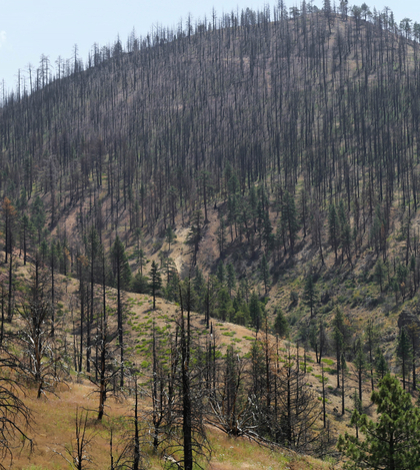In the last 50 years, Californians have invested heavily to create one of the largest and most unified water infrastructure systems in the world, carrying water all over the state, manage floods, and store water. Despite this fantastic achievement, most of the water still primarily comes from groundwater and snowpack. Increasing climate change and wildfires now call for a more proactive approach by investing in the ecological services provided by headwaters and forest to reduce the amount of damage a fire can cause.
Over the last 50 years, a change with wildfire suppression, a higher density in the forest, with an increased fuel load capacity, has created much more severe wildfires. These changes, along with reoccurring droughts, have contributed to tree mortality and bark beetle outbreaks, providing more fuel for future catastrophic wildfires.
To that end the class of 23 from The 2019 Water Leaders class organized by the Water Education Foundation, which represents participants all across California recommend the following:
- Develop a public awareness campaign educating the public that wildfires affect drinking water
- Amend air quality regulations that would allow for emergency back up generators to be tested
- Amend fuel reduction timber harvest exemption to include areas larger than 300 acres
- Mandate regional water quality control boards, CAL FIRE, and California Department of Fish and Wildlife all coordinate a strategic plan concerning long term tree thinning projects.
- Mandate each Integrated Regional Water Management (IRWM) region across California to address wildfire and water-related impacts in IRWM Plan on a regional basis.
- Put together long-term funding through a legislative strike force whose responsibilities would be to ensure watershed health, reduce wildfires risks, and forest maintenance.
 California Water News Daily Your Source For Water News in California
California Water News Daily Your Source For Water News in California


